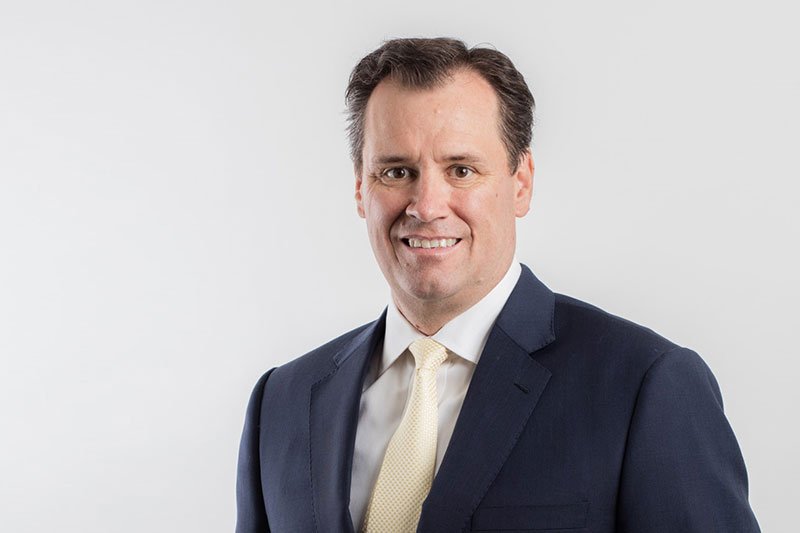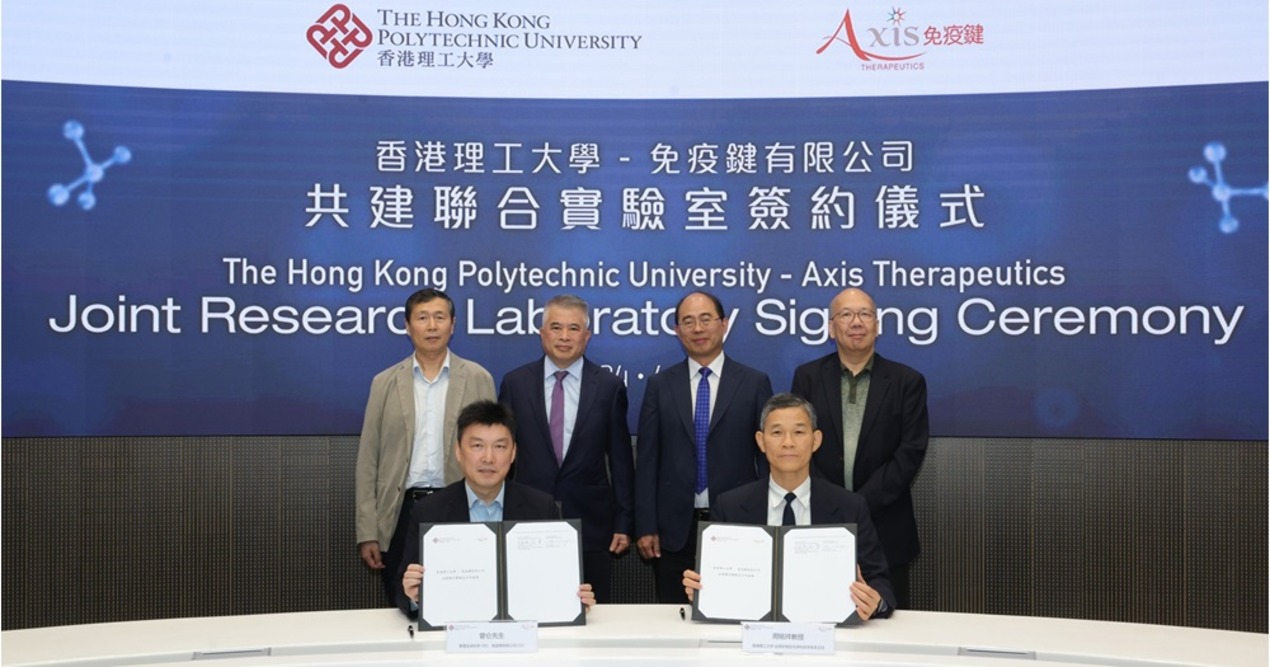
Image credit: SUTD
In January this year, OpenGov reported on the renewal of a strategic partnership between Singapore University of Technology and Design (SUTD) and the Eastern Health Alliance (EHA). They signed a new five-year Memorandum of Understanding (MOU), extending and expanding on a partnership that began with a three-year MOU in 2013, which had yielded 3 patents.
The new MOU aims to encourage greater number of SUTD students to specialise in healthcare engineering. We met with Professor and Associate Provost for Research, Martin Dunn, to learn more about this emerging field and how SUTD students are being prepared for it. Prof. Dunn talks about how SUTD’s unique programme structure is ideal for an inter-disciplinary field like healthcare engineering.
What exactly is healthcare engineering?
Healthcare engineering is not yet a common term. It is an emerging field, which is being created as needs in healthcare evolve due to ageing population and technology is poised to make a big impact, across the whole field of healthcare. It is already doing so in many areas.
A lot of other industries routinely hire engineers. It is a core part of how they operate. But in healthcare, engineers are not a big part of the ecosystem. Engineering has played an important role through products. But you don’t see hospitals or clinics routinely hiring engineers on their staff.
Healthcare engineering is bringing these talents that come from traditional and maybe not so traditional engineering schools into the healthcare business.
Machines have been a part of healthcare for a long time. Then what is the need for this field now?
Technology has accelerated exponentially over the past decade. A couple of factors enabled the acceleration. One is interconnectivity, the ability to connect those machines to each other, to devices that people have, to humans through sensors that humans may wear.
The second factor is the decreasing cost of dealing with data. All these machines deal with data in one way or another. Data is fed into them. And they generate a lot of data, that goes into supporting decision-making.
The process started probably 10 years ago or so, in healthcare records. But now it is a lot more than just patient records and patient data that a physician would enter into a terminal.
Historically, we would think of the healthcare tools as products. But now as all of those have become smarter and connected to the Internet, it changes the way healthcare practitioners would use them. The value for a company creating these products no longer resides in the products. It is in the services that can be enabled by the data coming in from all these products.
An aspect of healthcare engineering which interests us is how it brings together multiple disciplines and technologies. We would like to understand how the courses and research are structured at SUTD.
Today, there is a big emphasis on personalised, patient-centred healthcare delivery. This has a big impact on the backend in terms of operations, facilities, scheduling, optimisation. Almost all of the engineering disciplines are involved, electrical, mechanical, biomedical, computer science.
Then you have architecture. How do you create the physical space to overlay with efficient operations, so as to enable the best experience for patients as well as caregivers. And design. Design plays a big role in fashioning the experience, and in integrating the technology domains and operations.
As a young university, we are prototyping and building integrated approaches to engage with this really dynamic field. At SUTD, we have a holistic focus on engineering and architecture. We are not organised along the traditional disciplines. We are organised around products, services and system[1]. It’s very important that we are organised in this manner. Because our students can bring technologies together to create solutions.
We do not have a department or a pillar focused on healthcare. But we create graduates who have deep knowledge of multiple technologies and the skill set to bring them together to make an impact.
Healthcare engineering is in many ways a good example of how technology is changing the world and industries and jobs. According to some studies, 65% of children entering primary school today will ultimately end up working in completely new job types that don’t yet exist. These new jobs will be created by people who can bring different disciplines together to create solutions to address societal problems. At SUTD, I would say, we are trying to equip our students for that future.
Traditionally in engineering the focus is only on technology. Technology is not often designed with the end-user in mind. It ends up being more of a hindrance, instead of helping the doctors. How does SUTD incorporate the design aspect into something like healthcare engineering?
Engineers are not usually good at user-centric design. But incorporating user needs into design is not easy. If I ask you what your needs are, you may not really know what they are.
I will share a story. A professor at Duke, who has a couple of very successful start-up companies, works on creating medical devices for fixation of ligament strings, ACL reconstruction. He was here for a while and he shared the lesson with our students that if you come at this just from a technology perspective it can be a non-starter.
He had built this device with a material called a shape memory polymer. You put in the device, you fix it to the ligament, and then the temperature of the body will heat it up. It will expand and lock this thing into place. And over time it will bio-degrade. They worked with surgeons in the early stages. The surgeons said it looks great, it is better than what we have. Then they put a lot of effort into creating this. They obtained FDA approval and started trying to sell it. A surgeon took it and inserted it and as they waited for the temperature to rise, they sat there getting impatient. It took 4 minutes. Then the surgeon said I am not going to wait 4 minutes when I am doing surgery. Technically, the solution was fine. But in reality, it was not.
In this case, it wasn’t that they didn’t engage with surgeons, but they didn’t engage deeply enough to see how they are going to actually use it. So a big part of what we teach is that engaging deeply with the user throughout the whole design and development process is really important.
We do this throughout the curriculum. In the freshman year, we have a semester long design course for the entire university. It teaches empathy for users, methods to understand real user needs, how to work in teams with people from multiple disciplines and techniques to enable people to come up with creative solutions.
In addition, during the last semester, students have to do a final year project, what we call Capstone projects. This year we focused on a theme of wearable technology. That experience also helps students in understanding the users of the technology and figuring out their needs. They learn how to prototype fast, and iterate. Every year we have had 40 to 50 Capstone teams. Around 4 or 5 of them have focused on healthcare.
How do you come up with the projects?
These projects come from one of two sources. Firstly, we work with companies to get projects that are important to them. We want to be doing things that are meaningful. We want to be engaged in stuff that companies feel are important.
Sometimes it is difficult to figure out how important it is really to the company. We want commitment from them. So, we ask them to provide a little bit of funding. But more importantly we ask them to provide technical and/or business guidance to the project. That is much more valuable than a nominal amount that will pay for materials and supplies. A company representative who meets regularly with the students is really important.
The second are what we call entrepreneurial projects. We are trying to build the spirit of entrepreneurship and innovation at the university. We want to give the students the freedom to explore their passions while providing guidance. So, we have a process where students compete to do these entrepreneurial projects.
We have this whole curriculum where they learn how to take some of their design skills, how to understand opportunities in a market, how to put together a plan to create a Minimum Viable Product. The students go through this and then they pitch their idea. This is all ahead of the Capstone project. About 6 or 7 of them get selected, receive some funding and then they pursue their project.
Healthcare fits into both of these categories. I think it is important for us to be connected to the industry and to understand what the industry wants. I think it is also important that we are not too tied to the industry. We want to endow our students with independent thinking and entrepreneurship. Ideally there should be a push and pull of ideas.
Would the students working on the healthcare engineering projects have taken some courses explicitly related to healthcare?
We don’t have a curriculum specifically around healthcare subjects, around biomedical engineering for example. We do have a course, called Global Health Technologies, that is available to all our students as a ‘technical application elective’. These electives are later stage courses when the students have their fundamentals in place.
Students gain specialisation within their pillars in various technical domains. Then towards the end of their curriculum they have the opportunity to bring these together in different ways around broad technologies, in areas such as healthcare. Suppose they take a mechanical device design course, the way the course would be constructed would be that they would be doing projects that are healthcare oriented.
The Global Health Technologies course itself would pull students from different disciplines. Over time, we might have courses in things like tissue engineering or instrument design.
One of our strategies going forward is partnering with Changi General Hospital (CGH). This would help students gain knowledge and develop skills through experiences. That experience is through design projects, within classes.
Our students go to the hospital, they go through the wards, they observe the operations, they see how people, ranging from surgeons to nurses, use devices. This helps them develop empathy for the end users.
Can you tell us about the partnership with CGH during the first three years?
Initially, we did a lot of speed dating to get people together. To get our folks to learn about what they were doing, to get the hospital folks to learn about the technologies we were working on and thereby finding opportunities to work together.
We started with a series of projects. We pooled resources to fund them. Then about a year ago, we launched a second phase of projects that were more focused around robotics and automation. Those projects are all ongoing now. Our students did internships there. CGH was also involved in Capstone projects.

What are the key points in the newly signed partnership agreement? And what are the long-term plans for the partnership?
We have ratcheted our relationship to the next level. We are strengthening the healthcare track through the collaborative development of a course with them. We are embedding experiences in multiple courses.
CGH has been very generous in providing experts (surgeons, clinicians, nurses, operations personnel), who come and teach courses. A part of our plan involves joint faculty positions between SUTD and CGH.
In terms of research with commercial prospects, we have had a few successes. We have generated some intellectual property. We have then partnered with the hospital in the advanced projects, secured additional funding to further develop them. But even the stuff that is not successful commercially is invaluable in developing human capital. That’s a big part of our objective.
Ultimately what we want to do with CGH and maybe others is to develop a continuous innovation pipeline. Now we are test-bedding projects within the hospital. We have a vision for creating a hub of healthcare innovation, a health tech incubator or accelerator, where we would have the facilities and capabilities to do translational research and move projects to the next level. Where we can easily draw on expertise, use some of our unique research grade equipment and tools, say for fabrication testing or what not, draw on the hospital for test-bedding and gradually scale up.
Those are longer term plans. We hope that ‘long’ means ‘short’.
In many places, you will see somebody working on a medical device. They will never even be involved in a broader conversation about the impacts of ageing on society. To us, for our students and our faculty, it is important to always have the bigger picture context in mind. To me that’s what is really exciting about what we are doing at SUTD.
[1] At SUTD, the undergraduate programme is structured into four pillars or core areas of specialisation, Architecture and Sustainable Design, Engineering Product Development, Engineering Systems and Design and Information Systems Technology and Design. The programme is divided into two distinct portions, Freshmore (Terms 1 to 3) and Pillar (Terms 4 to 8). The Freshmore terms provide students with the fundamentals which prepare them for a specialisation in any of the four pillars. The four pillars are developed to offer a modern engineering and architectural education that crosses traditional disciplines. In addition, all undergraduate students are required to take up to seven classes in Humanities, Arts and Social Sciences.
















